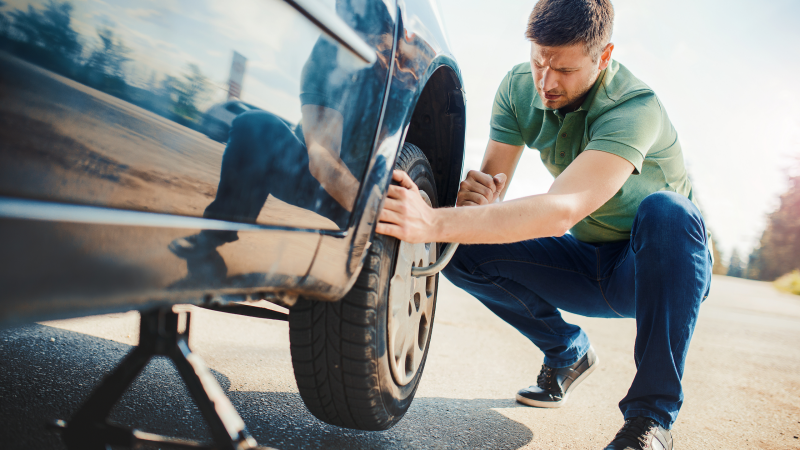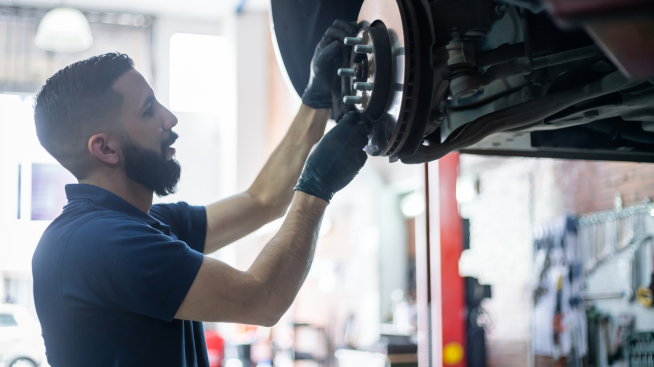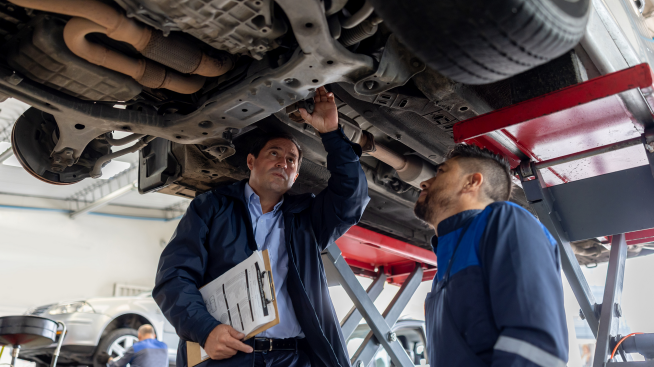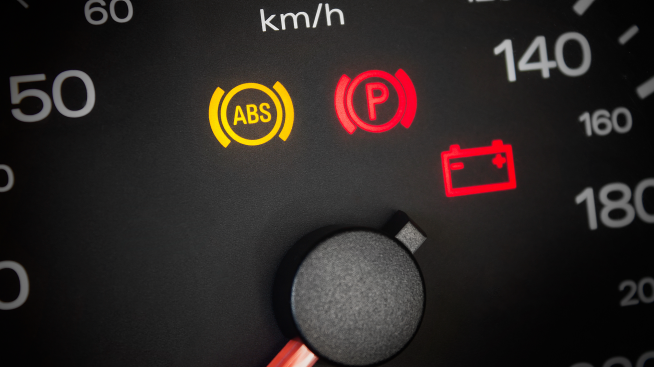Flat tires: What you need to know

Flat tires are a common nuisance for drivers and can happen at the worst times. Nearly every driver will face a flat tire at some point, so what do you need to know if it happens to you?
What causes a flat tire?
Flat tires often result from an air leak in the tire itself. A sharp object — nails and screws are common culprits — can puncture the tire and leave a hole.
A tire can also go flat from what’s known as a “bead leak,” where the tire can’t get an airtight seal because of debris or corrosion to the wheel. It’s a bit like a plastic container with a loose lid that allows its contents to spill out.
In addition, a tire could be flat when it’s simply underinflated, or leaking air from the valve.
Then there’s a blowout. In contrast to the examples above, a blowout happens suddenly with a large rupture and is caused by things like overload, driving over road damage, or uneven structural weakness due to treadwear.
How to know if you have a flat tire
A flat tire will sit flat on the ground and visibly lower than the other tires on your car. When driving, a flat tire will sometimes create an imbalance in the steering and alignment, “pulling” the car to one side. You may also notice vibrations or a “flapping” sound. Occasionally, you could hear a loud “pop” if your tire was punctured during a drive.
Why is driving on a flat tire dangerous?
Car tires are calibrated to hold a certain amount of pressure. This ensures a smooth, even ride. Driving on a flat tire can be risky for both you and your car, so you may want to limit how far you drive and get it repaired as soon as possible. Here are some of the possible dangers it poses:
Irreparable tire damage
While an external puncture can often be repaired, driving around on a flat tire can cause damage to the internal structure of your tires. This internal damage may be irreparable, in which case you’d need to completely replace the tire.
Damage to your rims or vehicle
Driving on a flat tire means your rims are likely making more contact with the road than they were meant to. This can bend them out of shape. Continued usage in this way may even cause damage to the vehicle itself.
Loss of control on the road
A flat tire can lead to unsafe handling, possibly even loss of control, because the tire isn’t as responsive to steering. This could create a dangerous driving situation.
Driving on a spare tire
If you were able to replace your flat with the smaller, donut-shaped spare tire in the trunk, it’s best not to drive around on it for too long. Spares aren’t built for everyday use and therefore have limitations on how far and fast you can drive with them. They’re temporary replacements to get you safely to the nearest garage.
What to do if you have a flat tire
If you find yourself with a flat tire, there are a few basic steps to consider:
While parked
If you can, very gently run your hands along the front and back of the tire to see if you can detect the penetrating object. It’s good practice to wear gloves when you do this. If the tire is punctured, you may want to contact a nearby tire repair shop for advice.
If you can’t find anything on the tire, however, it may merely be underinflated. If this is the case, you can use an air compressor if you have one available or reinflate it at a gas station for a small cost.
While driving
If you realize your tire has gone flat while you’re on the road, slow down gradually and find a safe place to pull over. Once you’ve safely pulled over, one option is to contact roadside assistance and wait for them in the safety of your vehicle. You may require a tow truck to take your car to the nearest garage, particularly if you don’t have a spare tire handy.
Car tire maintenance tips
While there’s no way to outright prevent a flat tire from happening, there are some tire maintenance best practices that can help lower your risk:
Check your tire tread
The tread on your tires is where your car contacts the road. The tread is a good indicator of when it’s time to get new tires. When the tread is excessively worn, your risk of getting a flat tire increases, as does your overall loss of traction.
How can you measure tread wear? Some tires come with built-in tread wear indicators. You can also use a tool known as a tread depth gauge. Another method is to place a standard U.S. quarter into the tread groove with the head upside-down. If the tread doesn’t touch the top of George Washington’s head, it may be time for new tires.
Check your tire pressure
Pressure imbalances can put undue strain on your tires and result in uneven or excessive wear on your tread.
An air pressure gauge is a simple, inexpensive tool to measure your tire pressure. It’s likely available at auto parts stores and may even be sold in gas stations. Using one can help you ensure your tires are properly inflated to the manufacturer’s recommended pressure setting (expressed as “PSI” or “pounds per square inch”).
Perform a car tire inspection
It may also be helpful to inspect your tires at regular intervals. This can help you identify wear or embedded objects that could pose problems.
In summary
A flat tire can happen to pretty much anyone, though there are a few precautions you can take to lower your risk. If you do get a flat tire, getting it repaired or replaced as soon as you can will help prevent damage to your rims and vehicle.



